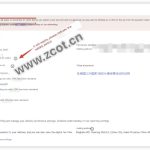In recent years, many Google publishers (ad monetizers) have shown a strong preference for older accounts, and there seems to be a widespread, almost unspoken consensus across the internet that new accounts are unreliable. Some even believe that new accounts—those without a payment history or that have never received payments—are unstable, prone to being banned, or easily throttled. In contrast, old accounts are generally considered less likely to be banned and more stable. This perspective has some merit, especially given the unpredictable nature of the Google platform.

Here, we’ll dive into a detailed discussion about new and old accounts for AdMob and AdSense, exclusively for one-time payment or premium subscription readers.
First, I must emphasize that Google’s strategies and rules change significantly every year. As of the current moment in 2025, many old accounts have been deprioritized, and their weight (or performance) is often lower than that of some newly created accounts. However, this year, new accounts are particularly prone to throttling or low ad rates.
As of September 2024, most ordinary old accounts (those used for long-term arbitrage, traffic redirection, or paid acquisition) have seen very low eCPM and CPC rates. We recommend reading the article “AdSense AFS Search Permission Accounts See a Premium Surge in the 2024 Winter” for a deeper understanding of the current landscape.
Thus, the assumption that old accounts always have higher weight or are inherently better than new ones is not entirely accurate at this time.
In previous normal periods, there were times when new accounts outperformed old ones. Old accounts often face issues related to historical associations or deprioritization, as they were registered under older risk control systems. With Google’s risk control systems upgrading annually, historical data associated with old accounts can lead to linkage issues. In contrast, newly registered accounts comply with the latest policies and undergo scrutiny from the most current risk control systems, making them more stable in such cases.
However, as of this publication, both ordinary new accounts and old accounts heavily reliant on traffic redirection or paid acquisition are difficult to operate effectively, with a high likelihood of being deprioritized or throttled.
From the author’s perspective, the biggest difference between old and new accounts lies in the PIN verification process. Old accounts have typically resolved payment issues and are fully set up. In contrast, new accounts must go through PIN verification (a time-consuming and cumbersome process). Once a new account passes PIN verification and has been active for some time, even if it hasn’t received payments, it is nearly indistinguishable from an old account that has received payments—at least in terms of ban safety.
During the PIN verification (address verification) process, accounts undergo checks for linkage and policy violations. Many accounts are banned during this stage, often while awaiting the PIN code. If an account survives PIN verification and remains active for a prolonged period without being banned, it is generally considered safe for the time being.


